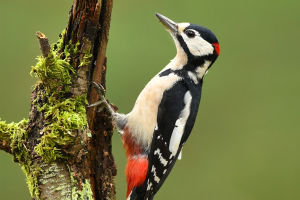Within the family, the cheetah, the leopard, and the jaguar stand out as distinct biological entities.
These magnificent creatures exhibit notable differences in their appearance, behaviors, and habitats.
This article aims to delve into the defining characteristics of these three species, aiding readers in distinguishing between them effectively.
Appearance Characteristics:
1. Cheetah:
Known as the epitome of speed, the cheetah boasts a sleek and slender physique, typically measuring between 115 to 135 centimeters, with a shoulder height ranging from 70 to 90 centimeters.
Its most striking feature lies in the evenly distributed, relatively small black spots adorning its body. With a compact head, large expressive eyes, and graceful contours, the cheetah embodies elegance in its form.
2. Leopard:
In contrast, leopards exhibit a more robust build, with body lengths ranging from 110 to 160 centimeters and shoulder heights ranging from 50 to 70 centimeters.
The spots on a leopard's coat resemble intricate "flower" patterns, occasionally forming discernible ring-shaped patches. These spots vary in size and are dispersed disorderly, contributing to the leopard's deep golden-yellow hue.
3. Jaguar:
The jaguar, one of the largest leopard species, commands attention with its formidable stature, measuring between 180 to 210 centimeters in length and standing at a shoulder height of about 70 to 75 centimeters.
Distinguished by denser and larger "patterns" of spots on its coat, the jaguar may also sport distinctive "eyepatch" markings around its head. Its coloration tends towards a prosperous, orange-yellow hue, adding to its imposing presence.
Habitat and Distribution:
1. Cheetah:
Primarily inhabitants of African grasslands, deserts, and shrublands, cheetahs occasionally extend their range into parts of Asia. They prefer open terrain and excel in high-speed pursuits, making them formidable hunters in such environments.
2. Leopard:
Leopards boast a relatively expansive range, inhabiting diverse landscapes across Africa, Asia, and select regions of the Middle East. Thriving in environments ranging from forests to mountains and grasslands, they exhibit remarkable adaptability to various ecosystems.
3. Jaguar:
Jaguars reign supreme across the American continent, encompassing South America, Central America, and North America. Preferring lush habitats such as jungles, swamps, and grasslands, they assert dominance as apex predators in the Americas.
Behavioral Habits:
1. Cheetah:
As the sprinters of the leopard family, cheetahs rely on their exceptional speed to pursue prey. Despite their solitary nature, they may temporarily bond with mates during mating seasons.
2. Leopard:
Leopards display a diverse predatory repertoire, targeting small mammals, birds, and even larger prey. Their adept climbing skills allow them to stash kills in trees, a behavior characteristic of their species.
3. Jaguar:
Jaguars exhibit a varied diet, preying on fish, reptiles, birds, and large mammals. Proficient swimmers also possess the unique ability among big cats to scale trees quickly.
Conclusion:
In conclusion, while cheetahs, leopards, and jaguars exhibit disparities in appearance, habitat, and behavior, they are vital to our planet's biodiversity.
To safeguard these magnificent yet imperiled creatures, concerted efforts must be undertaken to preserve their habitats, combat illegal hunting, and foster coexistence between humans and wildlife. Only through such endeavors can we ensure the continued survival of these iconic species for generations to come.


